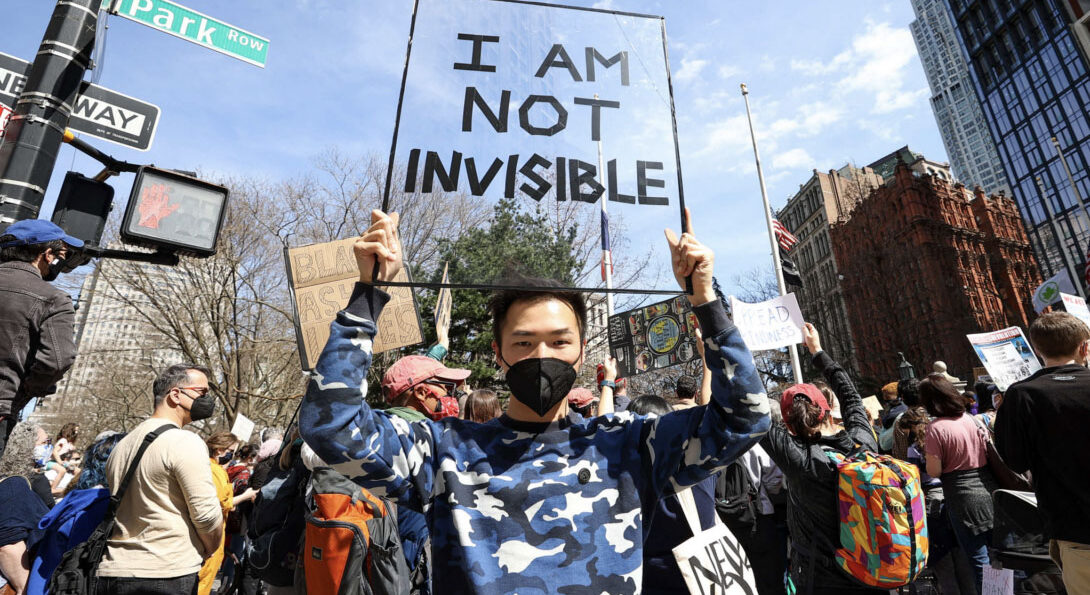Modeling the “Model Minority”: scientists push for more health research focused on Asian Americans
The exclusion of Asian and Asian American populations in public health studies thwarts ongoing efforts to promote health and racial equity.

Tayfun Coskun / Anadolu Agency via Getty Images
While the Asian population in the United States rises, the demographic’s representation in health data lags.
With a population of 23 million people, Asian Americans represent close to seven percent of the U.S. population and are the fastest-growing demographic group in the nation. Yet just 0.17 percent of the National Institutes of Health’s roughly $451 billion research funding between 1992 and 2018 went to clinical studies centered on Asian Americans.
According to researchers, there is not enough initial data to reveal disparities in Asian communities and make a case for collecting more data, thus creating a vicious cycle of underrepresentation. Tiffany Yip, a professor of psychology at Fordham University, said that the lack of research on Asian American subjects stunts the ongoing fight for health equity.
“Not having data is setting us up to perpetuate the invisibility of Asian Americans in health sciences and our national efforts to move towards health equity,” Yip said. “If you don’t have data, you can’t include Asian Americans in the discourse, and that keeps the cycle going.”
For decades, when researchers put Asian American subjects at the forefront of their studies, they often received pushback from journal reviewers. For ChangHwan Kim, a professor of sociology at the University of Kansas, reviewers’ comments calling his focus on Asian American subjects for studies into question are all too familiar.
“When you study Asian Americans, you always get questions about why it matters,” Kim said. “If you submit your paper to a journal, reviewers keep asking you why you didn’t compare them to another minority group. Asian Americans somehow cannot stand alone.”
The NIH took a step forward to boost the representation of Asian Americans in research in 2022.
The agency awarded Yip and her co-principal investigator, Cindy Liu, unprecedented funding for their Building Our Bonds Authentically Project, which centers on Asian American study subjects. The BOBA Project was launched just as anti-Asian hate skyrocketed amid the Covid-19 pandemic.
“The significant spikes in hate crimes created a sense of urgency around the issue that perhaps was not there before,” Yip said. “It’s a shame because it’s not that racism against Asian Americans didn’t exist before the pandemic, but certainly, the visibility of the crime and the violent nature of it elevated the topic in the national discourse.”
Inspired by the growing number of conversations about Asian identity, Yip and Liu established the BOBA Project to study how Asian and Asian American teens and their parents or guardians feel about issues related to their racial identity such as stereotypes and discrimination. So far, Yip said that the feedback on their research has been overwhelmingly positive, which makes her work that much more rewarding.
“Dr. Liu just sent me some feedback saying that one of the participants in our study didn’t realize how much racism their parents had experienced until they participated in the study,” Yip said. “When I hear something like that, that’s one of those bright moments when I think, ‘We’re on the right path. We’re doing important work.’”
The BOBA Project is currently the largest NIH-funded study dedicated solely to Asian and Asian American teens, and it sets a precedent for similar studies in the future.
“When I dig into past research, I wonder, ‘Oh, what are Asian American parents saying to their kids? Where are we seeing health disparities?’ And there’s just so little research,” Yip said. “Those are the moments where I realize I’m contributing to something larger than just the BOBA project.”
For Kim, researching Asian Americans has been an uphill battle throughout his entire career. On paper, the racial disparities in the Asian American community do not seem apparent enough because of the “model minority myth” and the demographic’s economic and academic success, he explained.
“Whenever you study Asian Americans, people are not satisfied with your findings,” Kim said. “Asian Americans are considered a minority, but they are not [statistically] aligned with other minorities in the United States to confirm the racial hierarchy of majority versus minority. White versus other.”
Assistant Professor of Sociology Emma Zang, who is among the few Asian faculty members in Yale’s Social Science department, described difficulties similar to those of Yip and Kim. Zang conducts research on the health issues facing Asian immigrant communities.
“We face challenges when we try to tell Asian immigrants’ stories,” Zang said. “People ask why I don’t look at other immigrants. They say that maybe it’s not only about Asian immigrants, and it’s about all immigrants, even though our empirical analysis has pretty much excluded all immigrants as a possibility.”
When Asian Americans are not overlooked, researchers often aggregate Asian American subjects, Zang said. While treating Asian Americans as a monolith masks struggling subgroups and has long-term consequences for the Asian American community at large, she added, there are tradeoffs to disaggregating data from a policy perspective.
“There is much heterogeneity within the Asian population,” Zang said. “It’s important to disaggregate the Asian population by ancestry, but some other people vote against it because the Asian population is already so small. We want to reunite all kinds of Asian people in order to push for bigger policy goals that benefit all Asian people.”
Zhang explained that because researchers want to publish in reputable journals, they seek out high-quality data to make their work as polished as possible. Zang said that sparse existing data on Asian Americans then becomes a deterrent for many researchers to look further; she said that the issue could potentially be curbed by establishing special journals dedicated to Asian public health research.
“We have some limited data. It’s not perfect, but it would still be valuable to produce research based on this data and then try to use it to have more resources for better data collection,” Zang said. “The imperfect data reduces the incentive for them to work on Asian populations in health research.”
As more and more Asian Americans trailblaze in the realm of research, Yip said she is optimistic about the future of minorities in research.
“There are days when being a woman in academia is tough. There are days when being an Asian person in academia is tough. And there are days when being an Asian woman is tough,” Yip said. “It’s definitely been a roller coaster in the past few years, but there are the bright spots that keep me going.”
With the rise of anti-Asian hate during the COVID-19 pandemic and the recent overturning of race-conscious college admissions, the Asian American community has been launched into the national discourse in recent years. The effects these events have on the community are yet to be studied, which has led these researchers to argue that the time is now to give visibility to the previously invisible.
“The Asian American population is growing, and it is not easy to ignore this growing population,” Kim said. “I am optimistic that the study of Asian Americans will get more attention in the future. In an ideal world, there should be no discrimination in terms of research topics. Research should not be ideology-driven, and it should not be prejudiced. We should be able to have frank, honest conversations. We should be able to reach a common understanding.”
By 2055, Asians are projected to become the largest immigrant population in the country.






